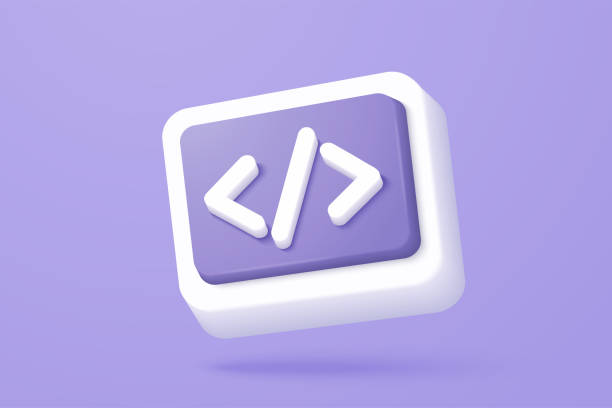 # DevOps @ Amazon
# DevOps @ Amazon  # DevOps @ Amazon
# DevOps @ Amazon  0
0 
Explain the difference between TCP and UDP in the context of network communications. Highlight the key differences in terms of reliability, connection state, speed, and typical use cases in a cloud environment.
Please sign-in to view the solution
 0
0 
Explain the concepts of Continuous Integration and Continuous Deployment (CI/CD). Discuss the benefits, key practices, and tools involved in implementing a CI/CD pipeline in a DevOps environment.
Please sign-in to view the solution
 0
0 
Explain the differences between Layer 2 (Data Link Layer) and Layer 4 (Transport Layer) in the OSI model. Discuss the key functions and protocols associated with each layer, including how the TCP stack fits into the OSI model.
Please sign-in to view the solution
 0
0 
Write a bash script that concatenates the contents of two files and writes the output to a third file.
Please sign-in to view the solution
 0
0 
Discuss the key features and components of the Linux operating system. Highlight its architecture, file system, and common commands used for system administration.
Please sign-in to view the solution
 0
0 
Explain the process of DNS resolution. Describe how a domain name is resolved to an IP address, including the role of different DNS servers and caching mechanisms.
Please sign-in to view the solution
 0
0 
Describe the key architectural components and best practices for building scalable, resilient, and secure applications on AWS. Discuss the use of services like EC2, S3, RDS, VPC, and IAM.
Please sign-in to view the solution
 0
0 
Describe the process of monitoring and identifying spikes in system resource usage. Mention the tools and techniques you would use to determine which process is causing the spikes.
Please sign-in to view the solution
 0
0 
Explain what a Content Delivery Network (CDN) is and how it works.
Please sign-in to view the solution
 0
0 
Explain how you ensure high availability and fault tolerance in a distributed system. Discuss the key strategies, technologies, and best practices used to design resilient distributed systems.
Please sign-in to view the solution
 0
0 
Describe how you would design a scalable system like Hotstar to handle millions of concurrent users.
Please sign-in to view the solution
 0
0 
Explain what a load balancer is and its uses in a modern web application architecture. Discuss the types of load balancers, their benefits, and provide examples of how they can be used to improve performance and reliability.
Please sign-in to view the solution
 0
0 
Explain the difference between ELT (Extract, Load, Transform) and ETL (Extract, Transform, Load). Provide scenarios where each approach is preferred and the tools commonly used for both processes.
Please sign-in to view the solution
 0
0 
Describe the steps involved in creating a data warehouse. Include considerations for data modeling, ETL processes, and the technologies you would use.
Please sign-in to view the solution
 0
0 
Could you define Kubernetes, focusing on its main components such as Pods, Services (svc), etcd, Heapster, Scheduler, Cluster Autoscaler, and Horizontal Pod Autoscaler (HPA), and explain how each component contributes to container orchestration and management for a Solutions Architect involved in DevOps engineering?
Please sign-in to view the solution
 0
0 
Can you explain the differences between containers and virtual machines (VMs), including their architecture, use cases, and performance implications, from the perspective of a Solutions Architect specializing in DevOps engineering?
Please sign-in to view the solution
 0
0 
Explain the functionality and features of AWS Route 53 as a managed DNS service, including its integration with other AWS services.
Please sign-in to view the solution
 0
0 
What are the best practices and strategies for migrating existing on-premise applications and infrastructure to the cloud, considering AWS as the target cloud provider?
Please sign-in to view the solution
 0
0 
For a client launching a new mobile application expected to scale rapidly, propose AWS-based solutions to ensure scalable, secure, and cost-effective infrastructure. Consider the use of services like Amazon EC2, Auto Scaling, Amazon RDS, AWS Lambda, Amazon S3, and Amazon CloudFront.
Please sign-in to view the solution
 0
0 
Design a cloud-based solution for a client with fluctuating traffic patterns, focusing on avoiding overprovisioning without compromising on performance.
Please sign-in to view the solution
 0
0 
Design a Disaster Recovery (DR) strategy for a client's critical applications hosted on AWS, focusing on minimizing downtime and data loss. Consider the use of AWS services like Amazon RDS, AWS Backup, and Amazon S3 with cross-region replication.
Please sign-in to view the solution
 0
0 
Describe the sequence of events that occur from the moment a user enters a URL in the browser to the loading of the web page, including DNS resolution, TCP/IP connections, and HTTP/HTTPS protocols.
Please sign-in to view the solution
 0
0 
What strategies and technologies can be implemented to protect a network or application from Distributed Denial of Service (DDoS) attacks?
Please sign-in to view the solution
 0
0 
Can you explain the concept of Classless Inter-Domain Routing (CIDR) and how it is used to allocate IP addresses within networks, specifically focusing on its advantages over traditional classful IP addressing?
Please sign-in to view the solution
 0
0 
How does a Web Application Firewall (WAF) protect web applications, and what are the key features and considerations when implementing a WAF in a cloud environment?
Please sign-in to view the solution
 0
0 
What are the main differences between Security Groups and Network Access Control Lists (NACLs) in a cloud environment?
Please sign-in to view the solution
 0
0 
What are the differences between stateless and stateful architectures, and how do they impact system design?
Please sign-in to view the solution
 Backend Engineering
Backend Engineering  DevOps
DevOps  Data Science
Data Science  Data Engineering
Data Engineering  Data Analysis
Data Analysis  Quality Assurance
Quality Assurance  Project Management
Project Management  Product Management
Product Management  Frontend Engineering
Frontend Engineering